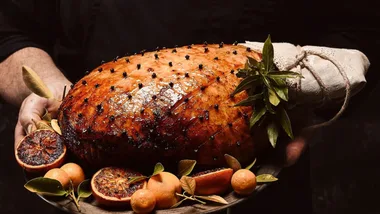Eating your first oyster is a milestone like your first steps, first days at school and first kiss. Like delicate messengers to the palates of youth they whisper secrets of sensuality and sophistication. For children, oysters appear at eye-level on tables, just out of reach, shrouded in tantalising prohibition and mystery. “You’re not quite ready for them yet,” we’re told, while the adults slurp in indecent delight.
I remember the feeling of reverence that attended my first oyster. Christmas. A dozen aunts and uncles perched along a wooden last-supper table, resting their eyes on my trembling fork. “Don’t chew,” were the instructions. “Just let it swim in your mouth, then swallow. Savour the aftertaste.” I remember its cool voluptuousness, its sea-saltiness and its strangeness as it swelled on my tongue. I remember gulping, wincing and then beaming with the giddy pride at being admitted to a prestigious club, all the while stifling waves of nausea at its slipperiness.
Over time my initial discomfort turned to deep and abiding pleasure. Today, I relish the heady transports oysters bring; the quiet raptures that shoot through my body from fingers to toes. Reserved for special occasions, oysters carry within their shells the memory of life’s happiest moments. They’re where sentimental and gastronomic pleasure mingle.

Oysters with wasabi nori and lime dressing (photo: Con Poulos)
Our desire for oysters is related to their rarity, to their elevation from everyday life. And so I was surprised when they appeared on the menu at a recent colonial banquet at the St Alban’s Writer’s Festival (two hours out of Sydney), hosted by food historian Jacqui Newling. The salt-pork and jellied desserts were to be expected. But oysters? In the gastronomically grim world of 19th-century Sydney? “It was cheaper to buy a bucket of oysters in the early colonial period than it was to buy a dozen eggs,” Newling told us as we devoured the luscious oyster loaf (crusty French rolls drizzled in a butter and wine sauce, flecked with cooked oysters). My tastebuds and curiosity were piqued.
The very foundations of Australian society, I soon discovered, were built on oysters. Quite literally. Sydney had no lime deposits, which were needed to create cement and mortar; the early houses were bound by burnt oyster shells instead. One reason oysters were so cheap was because their meat was of secondary importance to their shell. Take a look at the mortar used in Sydney’s Hyde Park Barracks, and you’ll find silvery speckles of oyster shells winking at you. And if you were to peer beneath the floorboards of the barracks, you would be greeted by secret stashes of oyster shells discarded by hungry convicts.
Oysters were once the most democratic of foods: salty travellers across class and racial divides, they were considered fit for princes and paupers alike. If an artist were to trace the outline of Sydney Cove in the 1780s it would undulate with middens of oysters, some reaching four metres high, created by the local Aboriginal people, who roasted the flesh and crafted fish-hooks and cutting tools from the shells. Godfrey Mundy, writing in 1846, describes “oyster-eating” as “one pursuit peculiarly congenial to the tastes of the people”. It was a “half-jaunting, half-sedentary” pastime that involved “a little sea air, a very little personal exertion, and a large amount of gastronomic recreation”.
All Australians were oyster-lovers, even those in inland towns. Unopened, oysters could travel for days across the country’s hot terrain, arriving at any number of the 19th-century oyster bars found in rural towns like Orange, Wagga Wagga or Mudgee. Sepia-tinted photos from the time depict well-whiskered Victorian-era men standing on dusty streets outside oyster bars, slurping and grinning at us across the centuries. Oyster bars, Newling tells us, were as popular as pubs.
We inherited our egalitarian love of oysters from the English, for whom they were so plentiful that they were regarded as poor people’s food. Before this, our gustatory lineage can be traced to the Romans whose appetite for oysters was so voracious they turned the coastline of Gaul into a vast oyster-farm, feasting as their civilisation festered. And before that the Greeks converted a briny delicacy into a tool for democracy. The custom of voting on an oyster shell to ostracise people from the polis was first practised in 487BC and its victims included Themistocles and Thucydides. Around 1,600 oyster shells have been excavated from the Athenian Agora bearing around 60 names of people deemed “undesirable and suitable for exile”, says historian Maguelonne Toussaint-Samat.
But what of the oyster itself? How might it experience the world? Here we’re confronted with humanity’s monstrous arrogance, for the life of the oyster is far more thrilling than our own. The oyster is born of hermaphrodite parents who in certain species drift seasonally between sexes, sometimes flaring their shells and fertilising themselves. Lacking any finer feelings of parental attachment, oysters spit out their larval infants and nature gives them two weeks to find a hard surface to call home.

Grilled oysters with lemongrass crème fraîche (photo: Ben Dearnley)
Premature death and predators stalk the oyster’s life – humans, starfish, mussels and sea snails, or the frightful whip of a strong current. Happily, the oyster is so preoccupied with digestion it has little time for cursing its destiny; in any hour the oyster may process between four and 20 litres of water. In fact, the full-grown oyster with its dark crinoline edges, milky-white flesh and plump belly is almost all digestive system: liver, stomach, intestines, mouth and anus. To paraphrase Brillat-Savarin, the oyster is entirely and exclusively what it eats.
So come Christmas or your next special occasion, as the ocean’s most delectable digestive system swirls its way around your palate, slipping from the roof of your mouth to the back of your throat, sending ripples of pleasure through your body, spare a thought for the histories it harbours within. Because between its exquisite pulp and calcified shell lie stories of democracy and destiny, conquest and construction, carnal pleasures and civic order: stories of the Apollo and Dionysus within us all.
.jpg?fit=900%2C1051) Ben Dearnley
Ben Dearnley








